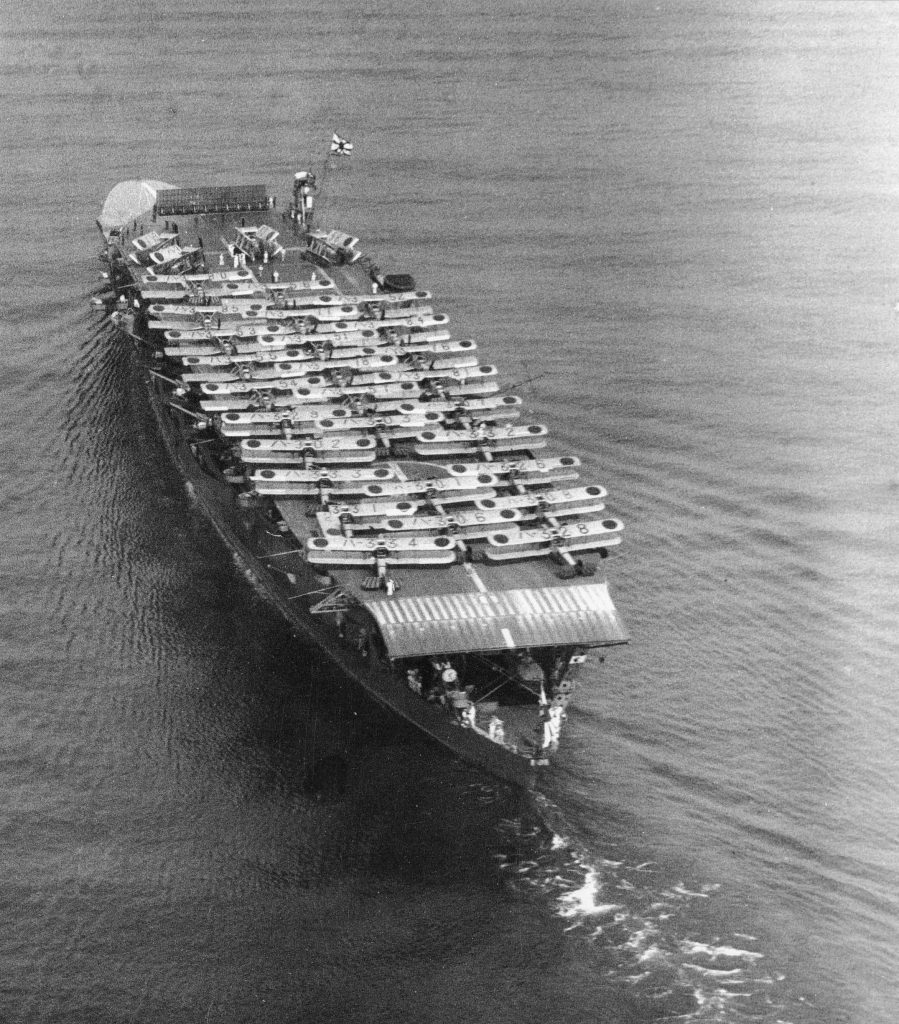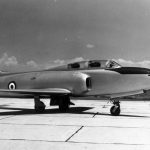 On this day in aviation history, December 28, 1929, a torpedo bomber intended for the Imperial Japanese Navy took off on its maiden flight from Brough Aerodrome in England, having been built by the British firm Blackburn. After this prototype was shipped to Japan, it launched a new line of torpedo bombers built by Mitsubishi Aircraft that would operate from some of the very carriers that a decade later found themselves north of the Hawaiian island of Oahu on a sleepy Sunday in December. This is the story of the Mitsubishi B2M.
On this day in aviation history, December 28, 1929, a torpedo bomber intended for the Imperial Japanese Navy took off on its maiden flight from Brough Aerodrome in England, having been built by the British firm Blackburn. After this prototype was shipped to Japan, it launched a new line of torpedo bombers built by Mitsubishi Aircraft that would operate from some of the very carriers that a decade later found themselves north of the Hawaiian island of Oahu on a sleepy Sunday in December. This is the story of the Mitsubishi B2M.
While the two largest navies operating in the Pacific and in East Asia during the 1920s were the United States Navy and the British Royal Navy, the Imperial Japanese Navy was beginning to rival the two of them. Having German colonies in China and the Pacific during WWI and following the enactment of the Washington Naval Treaty to limit the tonnage and number of battleships and battlecruisers, some in the Japanese Navy looked to carrier aviation as a way to close the gap between themselves and the Western navies. However, Japan still had use for British industry for its own modernization, and they looked to the British aviation industry to help develop airplanes and aircraft engines for their own fleet. One such company that worked extensively with the Japanese was Blackburn Aircraft Limited, which built carrier-borne aircraft for the Fleet Air Arm of the Royal Air Force.

In 1927, Mitsubishi Heavy Industries commissioned Blackburn to develop an aircraft to replace its B1M (formally designated the Navy Type 13 Carrier-Borne Attack Aircraft). If the British-built prototype proved to be successful, Mitsubishi would produce the design locally. Blackburn took the design of its Ripon torpedo bomber/reconnaissance and scaled it up to the Japanese requirements. On December 28, 1929, the prototype of this aircraft, referred to in-house as the Blackburn T.7B, and by the Japanese as the 3MT4, made its first flight at Brough. The aircraft was powered by a French Hispano-Suiza 12Lbr engine producing 625 hp. In addition to the licensed airframe, Mitsubishi also secured a license from Hispano-Suiza to build a 650 hp variant of the engine in Japan as well. In February 1930, the T.7B was shipped to Japan, and Blackburn’s Chief Engineer G.E. Petty was sent over to Japan to supervise the assembly of the T.7B and the initial production of the initial Japanese-built machines. After Mitsubishi built several prototypes in Japan, the 3MR4 was adopted by the Japanese Navy as the Type 89-1 Carrier Attack Plane but was more commonly referred to as the Mitsubishi B2M1.

The Mitsubishi B2M1 entered production in March 1932 and was incorporated into the carrier air wings for the Akagi, Kaga, Hōshō and Ryūjō aircraft carriers. Additionally, the B2M was flown by units assigned to coastal air stations. The aircraft was armed with a forward-firing Vickers 7.7mm (.303 in) machine gun and between one to two Lewis 7.7mm (.303 in) machine guns on a flexible mount for the rear gunner and would carry a single torpedo or several bombs. The crew consisted of a pilot, a radio operator, and a rear gunner/observer. The weight of the torpedo and fuel often meant that when armed with a torpedo, the B2M would only fly with a crew of two. The wings and tail were covered in fabric while the internal structure was comprised largely of wood, steel, and aluminum.
However, the B2M suffered from poor performance while in service, largely stemming from chronic engine trouble. A new variant with a shortened wingspan and fuselage length, the Type 89-2 Carrier Attack Aircraft, or B2M2, was accepted by the IJN, but was suffered from similar issues, and as such the Mitsubishi B1M was never completely replaced by the B2M. At the start of the Second Sino-Japanese War in the summer of 1937, the B2M/Type 89 would see brief combat against Chinese positions, but on August 15, 1937, a flotilla of B2Ms set to bomb Shanghai were intercepted by Curtiss Hawk III fighters purchased from the United States. In the resulting engagement, the Chinese pilots claimed to have shot down 17 Type 89s while the Japanese reported losing six in combat and a further two ditched in Hangzhou Bay. With the pre-existing complaints from their own pilots and the high combat losses of this sortie, the Japanese Navy chose to withdraw the B2M from combat operations, and with the adoption of aircraft such as the Yokosuka B3Y and later the Yokosuka B4Y (codenamed the “Jean” by Allied air intelligence units in WWII), the Mitsubishi B2Ms were relegated to training roles or as instructional airframes in ground schools, such as one sent to the Tokyo Institute of Technology. Today, there are no surviving examples of the 205 Mitsubishi B2Ms in existence.

While the Mitsubishi Type 89 Carrier Attack Aircraft/B2M proved ultimately to be an unsuccessful aircraft, it is an example of the transitionary period in Japanese aviation history when Japan still relied on foreign designs to secure a path for the development of aircraft that were entirely designed and built in Japan itself, which would have greater ramifications during the Second World War.
Today in Aviation History is a series highlighting the achievements, innovations, and milestones that have shaped the skies. All the previous anniversaries are available HERE



































